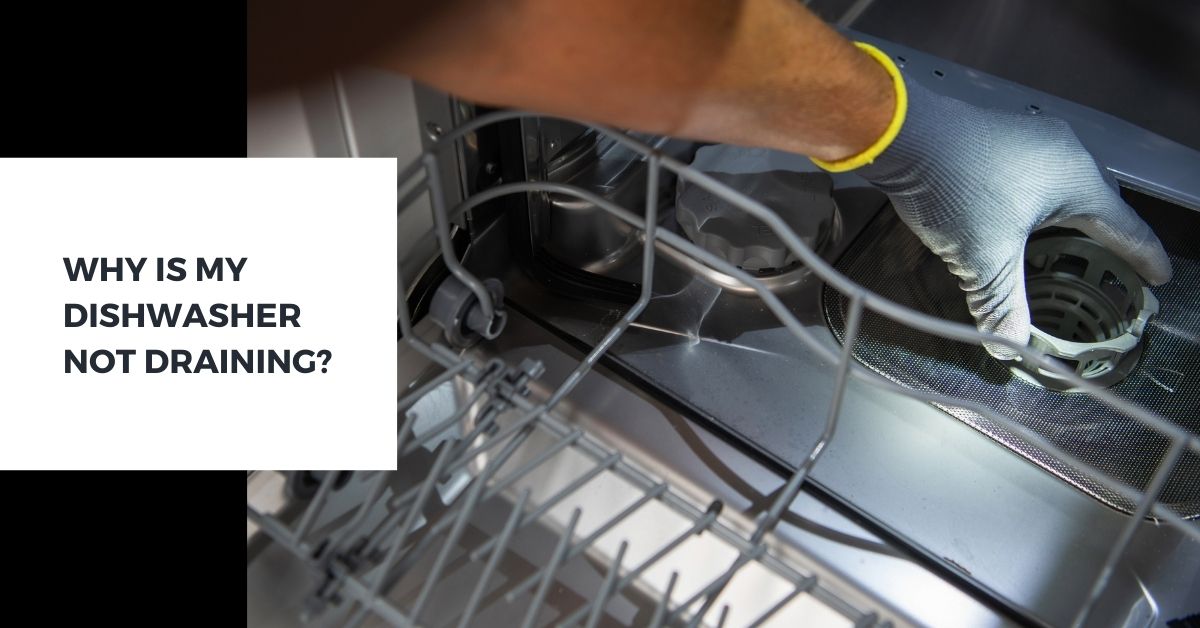It is one of the most terrifying situations when you encounter something that your dishwasher doesn’t drain. There can be multiple instances for the cause, to get to the right one is the main thing. That is the purpose we get you some of the common reasons for why my dishwasher is not draining.
I know the feeling that you are going through when your dishwasher doesn’t drain. Because it gives the opportunity to generate foul smells and produce harmful microorganisms. These all together can cause a complete hodgepodge in your home. It needs to get immediately addressed before the formation of harmful viruses. It can also create stains and your machine life will deteriorate if not treated on time.
This is one of the common instances that is faced by many consumers across the globe. There are few solutions that you can perform to solve it by yourself or you can call a plumber to fix it on your behalf. Whichever scenario you adapt, first you need to be aware of the reasons why dishwashers don’t drain.
Why is my dishwasher not draining?
Before you start inspecting the reasons for the dishwasher not draining, let me give you some safety measures that you need to take. Turn off the main power supply or unplug the dishwasher from the socket. Next, you need to check whether the water supply that has been linked with the dishwasher should be disconnected.
1. Examine if something is stuck in the drain hose
The first thing that you need to do when your dishwasher doesn’t drain is to check the drain hose. This is one of the most common situations that consumers face while using the dishwasher.
Every dishwasher comes with a drain hose that is being connected to the garbage container of the machine. If something is stuck in between the drain hose which can be the leftover food or other items, the water will not drain.
Other possible reasons for or the drain hose getting stuck will be because it’s bent by over usage or any external damage. It can also be because the drain hose is not properly connected. The reasons can be many, this is why you need to thoroughly investigate the condition of the drain hose.
2. Check the filters
The filters are usually situated when the water is being passed out through the dishwasher. You need to check whether the filters are free from any blocking particles. You can also check the filter and clean it and reinsert it back so that you don’t need to have any second thoughts about the filters causing the issue.
The location of filters completely depends on the type of dishwasher brand that you have opted for. Usually, it is found near the water spray within the dishwasher. You can easily remove the filter by revolving it in the prescribed direction mentioned above. Later, you need to place it in a water-filled detergent container so that it removes all the grease and other dirt that has been built upon.
Related: How to clean a dishwasher?
3. Check for any damages to the pump
The drain pump is one of the important elements when it comes to clearing the water from the dishwasher. It is also the softest area where it can receive huge damage. This can be due to when the leftover food particles are being passed out through the machine which can cause an impact on the drain pump. It can also be due to the excessive use of detergents that generates grease over the drain pump that leads to malfunction.
The drain pump is a small motor that is used to regulate the pressure of water within the dishwasher. If any metal particles are passed through the dishwashing cycle, it can cause huge damage to the pump.
The process to check for any damages to the pump will be physically investigating the section. You can also use the help of a multimeter to see whether the device has been properly operating. You can find the drain pump at the bottom of the dishwasher where you need to remove the inlet hose before accessing the part.
Also, check for any issues whether the pump seal has been broken. Usually, some of the consumers have seen that there is leakage below the dishwasher. This is mainly to the damage which has been caused to the drain pump seal.
4. See if there is an electrical malfunction
The source of power supply can also be one of the major causes that the dishwasher doesn’t drain. Because the dishes are very sensitive when it comes to functioning the device on the power supply.
The issue can be because of the low or high voltage of the power supply towards the dishwasher. It can also be due to the switch getting damaged.
As the dishwasher is completely developed on an electronic platform, you need to ensure proper care while functioning it. Never try to interrupt the dishwasher cycle through the power supply. This can also cause a malfunction.
5. Depends on the functional cycle
If you ever select the wrong dishwasher cycle, it can lead to confusion within the machine and stops the draining process. This can also be due to the external influence of interruption which can be done from the end-user or the power supply or type of dishes that you have inserted.
The best way to examine this circumstance would be to select the proper wash cycle for your dishwasher. If you encounter such a situation, some of the dishes have been integrated with a reset button that you need to click. Check your owner’s manual in which they would mention what kind of function that you need to operate based on the dishes that you put in the machine.
6. Notice if there is an air gap
The air gap between the dishwasher hose and the sink which has been connected may have a gap. Due to this, the draining function will not happen. Because the air gap between the dishwasher leads to building up residue that can consist of greasy substance which can turn into an obstacle.
The air gap is one of the mediums in which the dishwasher water can easily pass out water from the faucet towards the sink. When it is clogged by foreign debris, it makes it hard for the water to get drained out.
The best possible solution for this would be to check the air gap and detach the part from the dishwasher. The air gap is usually found in a small cylindrical shape that has been fixed with the source of water supply. After finding the air gap, you need to then wash the device with a brush and clean it extensively by using a good detergent.
7. Observe if something is getting clogged in the garbage disposal
The garbage disposal is usually found at the bottom of the dishwasher. It is the section that can cause the dishwasher not to drain water because of the leftover food particles getting blocked.
There are two possible situations in dealing with the garbage disposal. The first solution is you need to remove the garbage disposal and clean it manually. The second method is by taking the help of the self-cleaning cycle from the dishwasher. When you perform a dry run of a dishwasher, it automatically clears out all the clogged particles.
Related: How to clean a dishwasher?
To sum it up
While you try to solve the problem, the first thing that you need to do is check the warranty. If your dishwasher comes under the warranty period, you need not worry about the issue as you can directly call the technicians to fix it up for free.
Some of the above instances can be directly resolved independently. If you find that the above solutions are out of your reach, you can always call a plumber to repair them. Before you do it, check for the reviews prior to the service.
You may also want to have a look at How does a Dishwasher work?
I hope that you found the solution for your dishwasher not draining the water. Let me know if you have any doubts or concerns in the comment section below.

